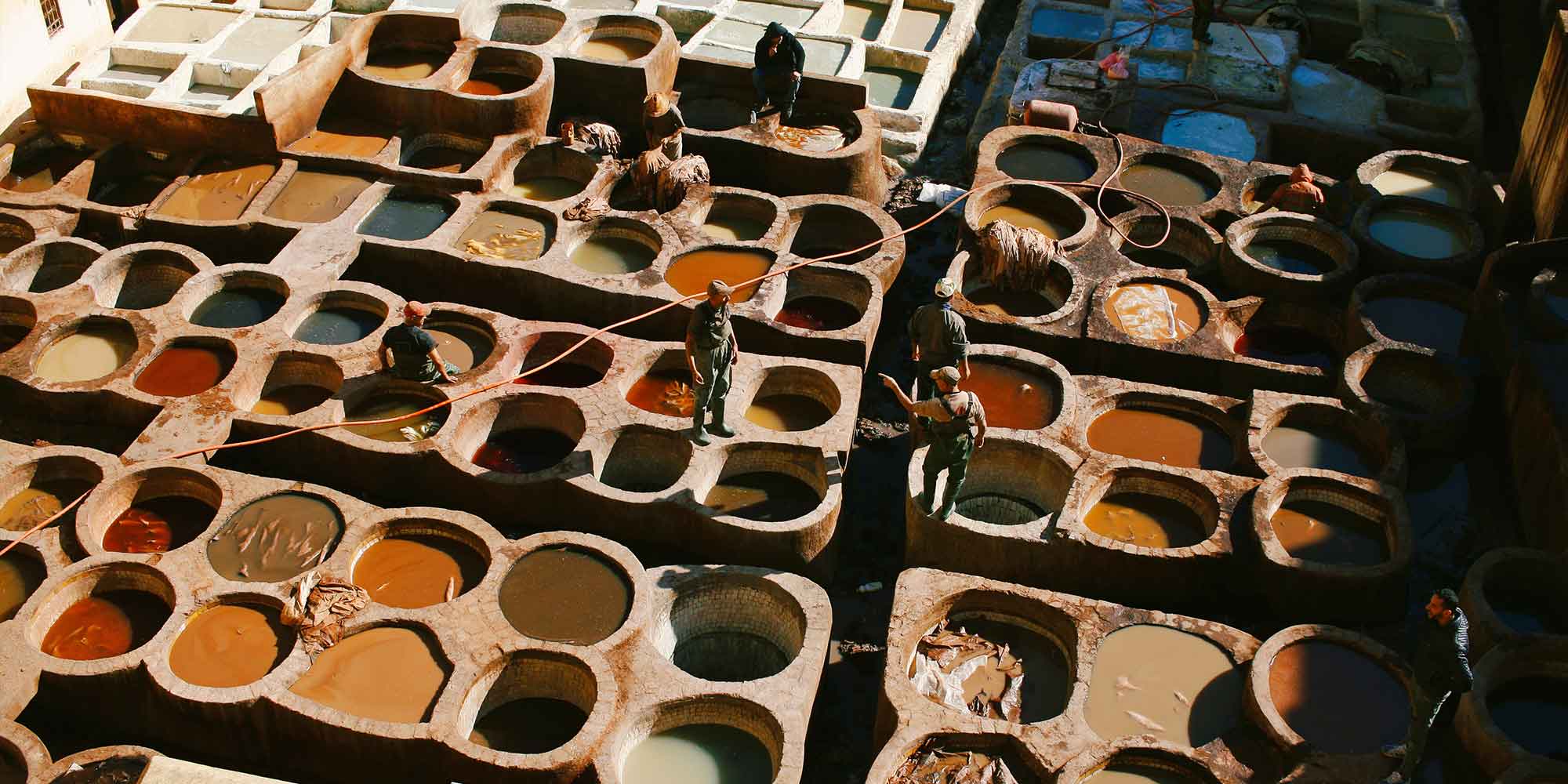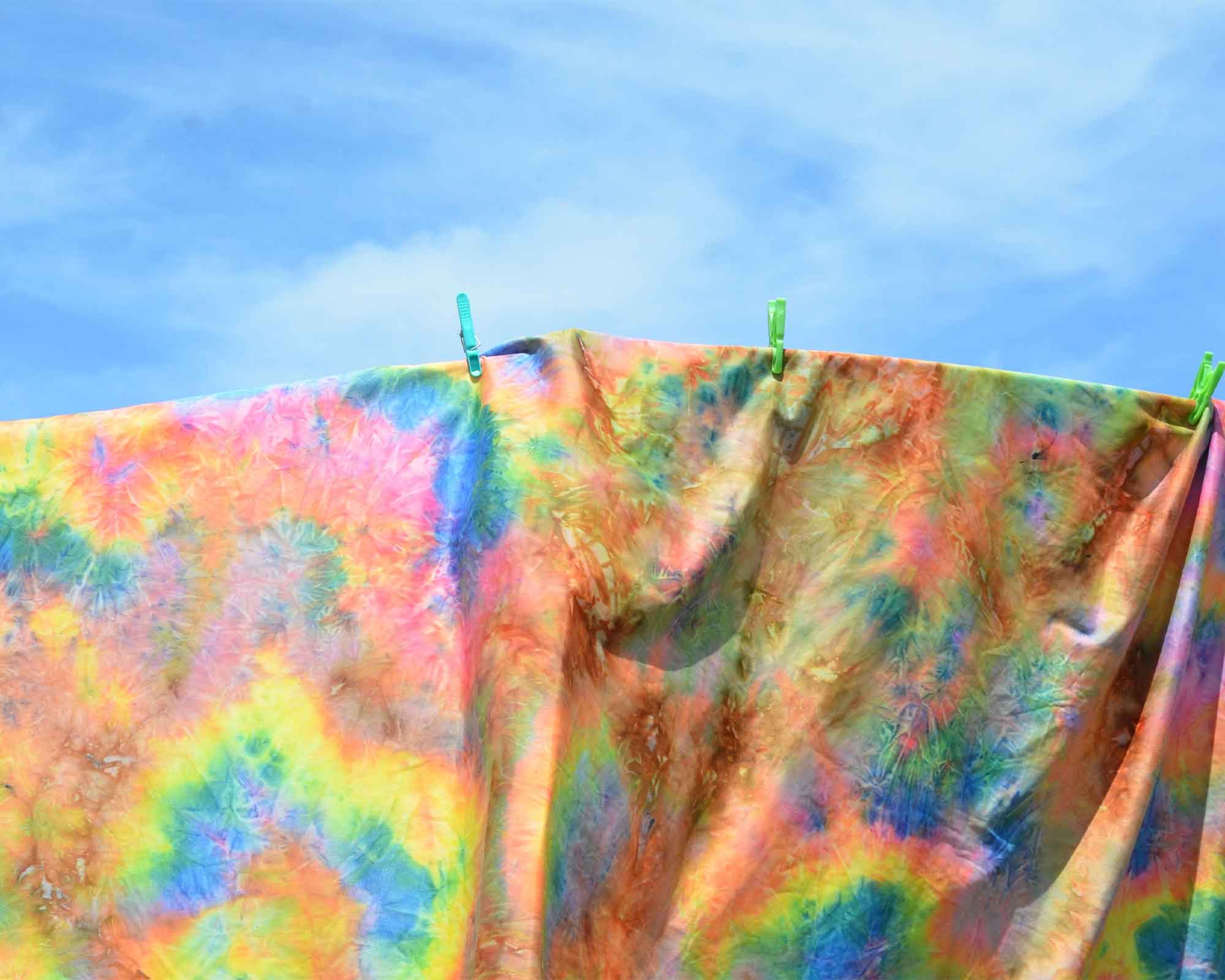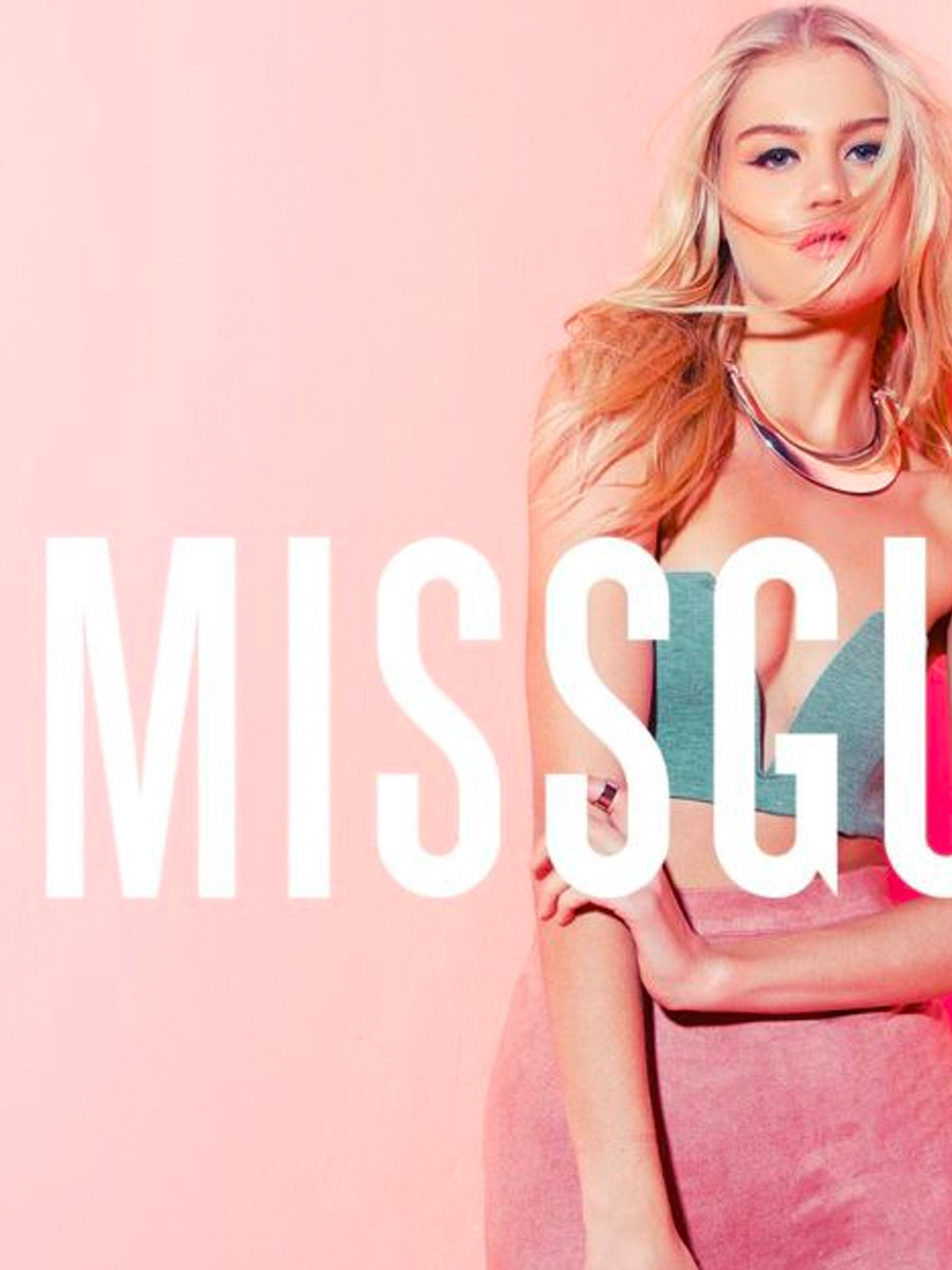What’s the first thing you notice when you see a piece of clothing? Chances are, colour is what catches your eye, and the rest follows suit. For the consciously-minded, you might then inspect what material the garment is made of, where it was made and how, but—back up—did you know that that seemingly innocent shade of pink or blue is often one of the most harmful parts of clothing production? Let’s take a look at the often-overlooked impacts of textile dyes on people, the planet, and animals—and discover if there are any eco alternatives worth keeping an eye out for.
A brief history of textile dyeing
Historically, colour has been used in clothing to represent status or socio-economic position. The brighter and more brilliant colours like reds were often reserved for the elite, while poorer populations wore plain, dark colours. One notable example of this is in Japan, where the still-popular indigo dye found its origins.
Today, what we might associate with denim or tie-dye was developed in Japan after being introduced from China, though similar techniques can be found worldwide. The “Shibori” dyeing process was created when the Japanese lower classes were forbidden from wearing silk and brightly coloured clothing. The dark indigo colour, however, was allowed.
Originally made from plants and done on a much smaller scale, modern indigo dye is often synthetic and requires intensive labour and chemical processing. We can find the same story across the rainbow.

The current state of affairs
While traditional dyeing techniques around the world often take colour straight from nature—from Bogolan mud dyeing in Mali to Ayurvastra in India—modern dyeing has taken a turn to account for the vast amounts of clothing produced every year. Today, 90% of our clothes are dyed synthetically and require incredible amounts of water and often toxic chemicals in production.
Water woes
Water use in fashion is staggering, but did you know much of the water used within production is utilised during the dyeing phase? The dyeing and finishing phase of textile fibres can require as much as 200 tonnes of water for every tonne of textiles produced, according to Asim K. Roy Choudhury (retired professor and HOD Textile). And the majority of this water returns to nature as a “toxic chemical soup”, laden with residual dyes, hazardous chemicals, heavy metals, microfibres, and mordants (chemicals used to bond dyes with fabric).
While people in the West are piling colourful clothing into their shopping baskets, rivers, canals, and streams in high clothing production countries like Bangladesh and China are turning black because wastewater is commonly dumped directly into waterways, thanks in part to weak regulation and enforcement.
Impact of textile dyes on people and animals
It should come as no surprise that waterways flooded with toxic chemicals are bad news for any living creature who happens to come in contact with them. Many synthetic textile dyes used today, like the notorious azo dyes, are carcinogenic. Although these dyes are banned in the EU and some other nations due to their toxicity, they are still commonly used in fast fashion clothing produced in parts of the world. Since azo dyes are water-soluble, this makes them easy for your skin to absorb and, as a result, may cause symptoms, including skin and eye irritation. And the modern take on the indigo dye we mentioned earlier? A chemical cocktail that includes formaldehyde. Yikes.
Sadly, many people who live in places in Bangladesh and China can’t access clean drinking or bathing water because of this dye-driven contamination and may be exposed to it on a daily basis.
Who’s to blame?
As is true with much of modern fashion production, large, usually Western brands that outsource most of their manufacturing to countries like Bangladesh and China to exploit their cheap labour force play a significant role here.
However, we can’t overlook supply and demand. We live in a consumer-driven culture, and society’s obsession with fast fashion currently drives the clothing industry. By perpetuating a cycle of “buy a lot, wear a little, dispose too soon”, the planet and everyone who inhabits it will continue to suffer the consequences.
Improvements
In recent years, there have been some improvements as organisations like Greenpeace and their Detox Fashion campaign, Partnership for Cleaner Textile (PaCT), and the ZDHC Roadmap to Zero have pushed for reform on a global scale. Certifications are also emerging that ensure product safety. OEKO-TEX® STANDARD 100, for example, inspects every component and makes sure textiles are safe for people and the environment. Similarly, BLUESIGN aims to find solutions for sustainable textile production by eliminating harmful substances at each step of the supply chain. Both of these examples are taken into consideration when we rate brands.
For two of the largest garment manufacturing hubs in the world, Bangladesh and China, some action is being taken by local governments to improve things like pollution and environmental laws, and we are seeing progress in both nations.
According to Minister Shahab Uddin from Bangladesh’s Ministry of Environment, Forest, and Climate Change in a statement to CNN in late 2020, “a range of measures were being taken to address pollution, including updating conservation and environmental laws, imposing fines on polluters, monitoring water quality, setting up centralised treatment plants, and working with international development partners to improve wastewater treatment.” While larger producers are committing to these initiatives, compliance from smaller factories is rarer due to a lack of knowledge, training, or funds.
You’ll find a similar story in China, where “a range of tough new environmental policies have been enacted in the past few years”, resulting in improving inland water surface quality. However, toxic and polluted water is still an issue in many areas, and the problem is far from resolved.

Are “natural” and other “eco” dyes the way to go?
You’d be forgiven for thinking that we could simply fix the problem by going back to our roots—literally—and using only “natural” dyes. Natural or eco dyes are made from things like plants, seeds, barks, lichens, or even insects. But despite their wholesome image, they have their own set of problems, including water use. And while the dye materials themselves may not be toxic, the chemicals used to bind them to fabric (mordants) usually are, which brings us back to square one.
It is possible to dye clothing without the use of mordants, and some brands do. The catch is that the colour will often fade or change hues over time, and while some people would cherish this as a unique part of their sustainable garment, the fast fashion industry is unlikely to feel the same. Some natural dyes are also naturally high in tannins and are known as “substantive dyes”. They bond well with fibre without mordants and don’t experience as much fading but are still not used on a commercial scale. Why? Natural dyes are generally only compatible with natural fibres, and therefore cannot be used in conjunction with synthetic fibres—such as polyester—which are widely used by fast fashion brands.
So, natural dyes have their own set of problems. But they are certainly a step in the right direction. They have a lot of potential if we can work out how to implement them across the industry while keeping a close eye on worker and animal welfare and their impact on the environment.
Looking towards a sustainably colourful future
There needs to be a global, systemic overhaul of fashion as we know it. We need to slow it down at all levels—from seed to end of life—and foster an industry that values workers, longevity, and leaving as little impact on the world as possible.
For textile dyeing, this may look like using more eco or natural dyes on natural fibres, embracing the fading and changing hues that can come along with that, or even leaving dye out of the equation altogether. There are also a number of startups that are working hard to shift the way we colour clothing. DyeCoo is one such innovation in synthetic dyeing that uses CO₂ rather than water and additional chemicals to adhere colours to fabric. As ever, do your best with the information you are given and make decisions that align with your values by checking each brand’s rating on our Directory or app before shopping and encouraging those who aren’t doing enough to make a change.
In the meantime, one of the best things you can do as a shopper is to be mindful of your fashion habits. Consider whether you really need that new piece of clothing or if you can instead head to your local thrift store to extend the life of clothes already in existence. Perhaps you can finally take that old pair of shoes to the cobbler for repair or learn how to sew to fix that hole in your favourite jumper. Maybe you organise a clothes swap with your friends, family, or colleagues. And if you must buy new, be sure to support brands that are doing their part to reduce the impact of textile dyes in their garments.
















